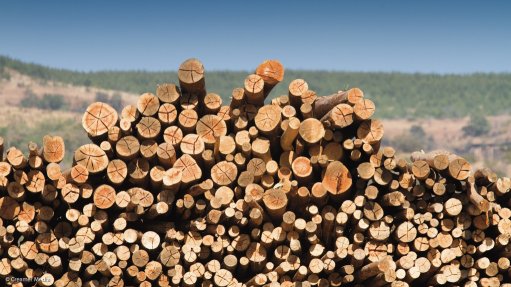
Photo by: Duane Daws
Pulp and paper producer Sappi and the UK’s Edinburgh Napier University have discovered a new low-cost process to make nanocellulose, following a three-year partnership, with Sappi planning to build a pilot-scale plant for low-cost cellulose nanofibrils (CNF) production.
Sappi’s new nanocellulose producing pilot plant is being planned for the end of 2015, Sappi group head of technology Andrea Rossi said in a statement on Tuesday.
This pilot plant would aim to move Sappi into new adjacent business fields based on renewable raw materials to produce innovative performance materials and help deliver Sappi's strategy to seek growth opportunities in adjacent and new markets.
Rossi added that the pilot plant would test the manufacturing of dry redispersible CNF. Sappi would, ultimately, be able to manufacture CNF with unique morphology, specifically modified for either hydrophobic or hydrophilic applications.
Products produced would be optimally suitable for conversion in lighter and stronger fibre-reinforced composites and plastics, in food and pharmaceutical applications, and in rheology modifiers, as well as in barrier and other paper and coating applications.
Rossi indicated that using the products manufactured in the pilot-scale plant, Sappi would seek codevelopment with multiple partners to incorporate CNF into a variety of product applications to improve performance and create unique characteristics.
Sappi research and development director Math Jennekens explained that nanocellulose was extracted from wood fibres and had several unique optical, barrier and strength properties.
Nanocellulose was completely sustainable, making it desirable as a new material for various industrial and transport applications.
With the new low-cost process, Sappi would be able to produce the material on a commercially viable basis, without producing large volumes of chemical wastewater, which was associated with existing techniques.
Nanocellulose had previously been produced by intensively processing wood pulp to release ultra-small or nanocellulose fibres, each so small that 2 000 could fit inside the width of a single strand of human hair.
The Edinburg Napier research team had been able to significantly reduce the amount of energy needed to power the process, as well as reduce the need for expensive chemicals, which could be easily recycled and reused.
“The [new] process produces a dry powder that can be readily redispersed in water and leaves the nanocellulose unmodified – effectively making its surface a chemical blank canvas [that is] more easily combined with other materials. The ability to bring all these attributes together have, so far, eluded materials scientists working in the field. It is very exciting,” stated Professor Rob English, who led the research with his Edinburgh Napier colleague Dr Rhodri Williams.
English noted that nanocellulose produced at the proposed Sappi plant could be used in a wide range of industrial and everyday products and devices because of the way it could improve the properties of materials they were combined with.
It could be used to thicken water-based products such as paints, foods and concrete. Further, when used in plastics to make a composite, nanocellulose could replace glass fibers, which English pointed out was attractive in the production of the next generation of lighter, fuel-efficient vehicles.
“Because of its low oxygen permeability it could also be a possible replacement for plastic films in packaging. Then there are also applications for it in containing films in lithium batteries and touch screen displays. And, as cellulose is inherently biocompatible and bio-absorbable, there is considerable potential in biomedical applications such as wound dressings and regenerative medicine,” he outlined.